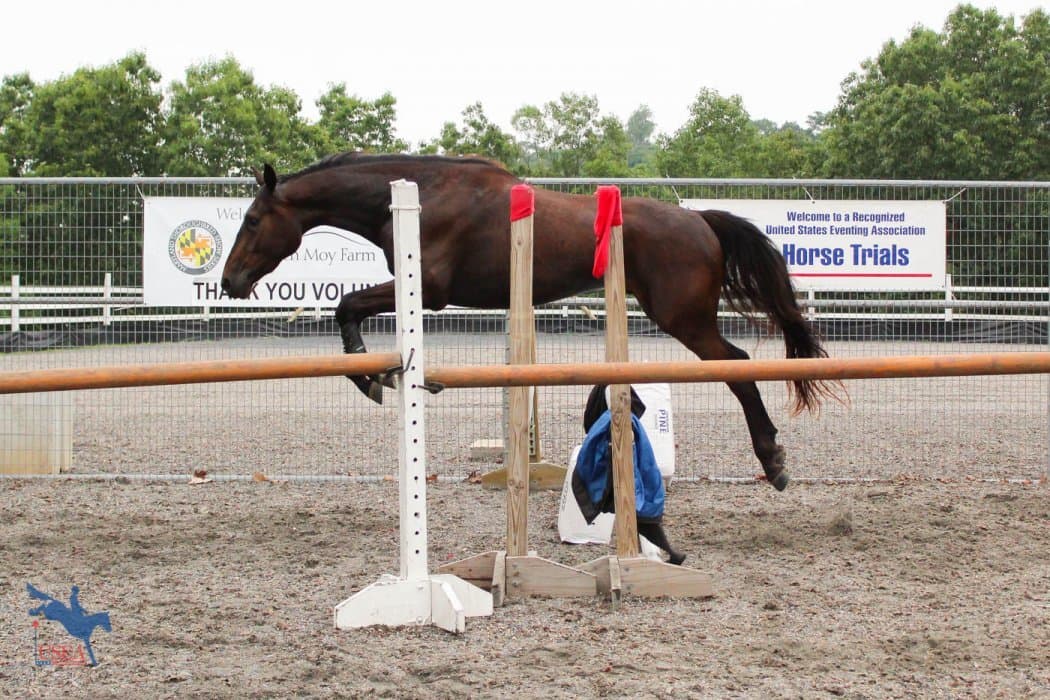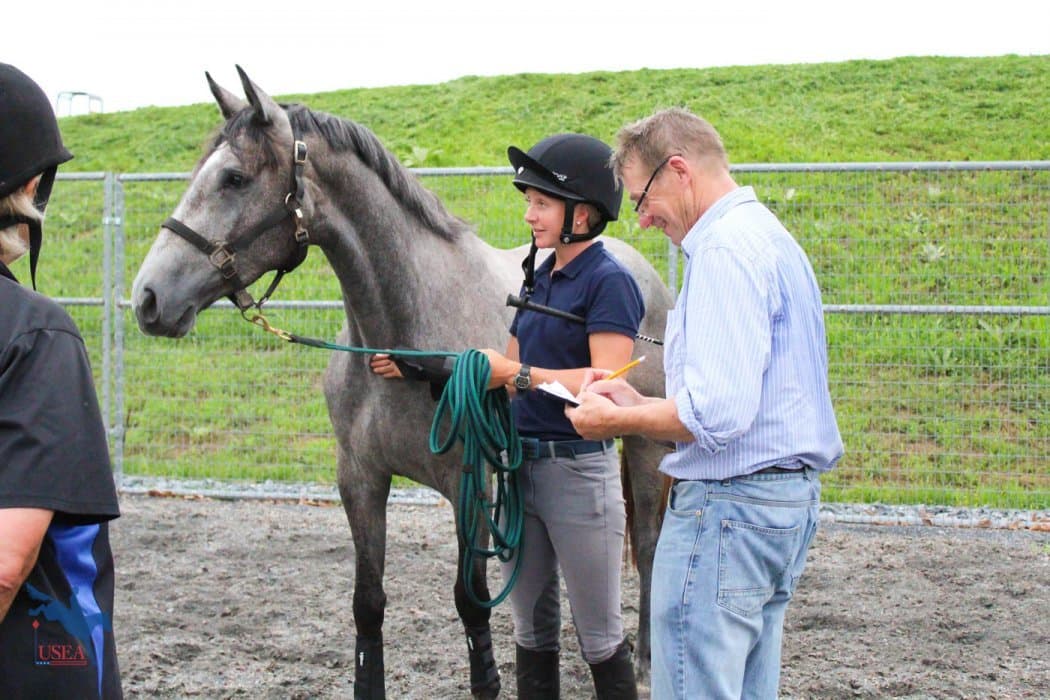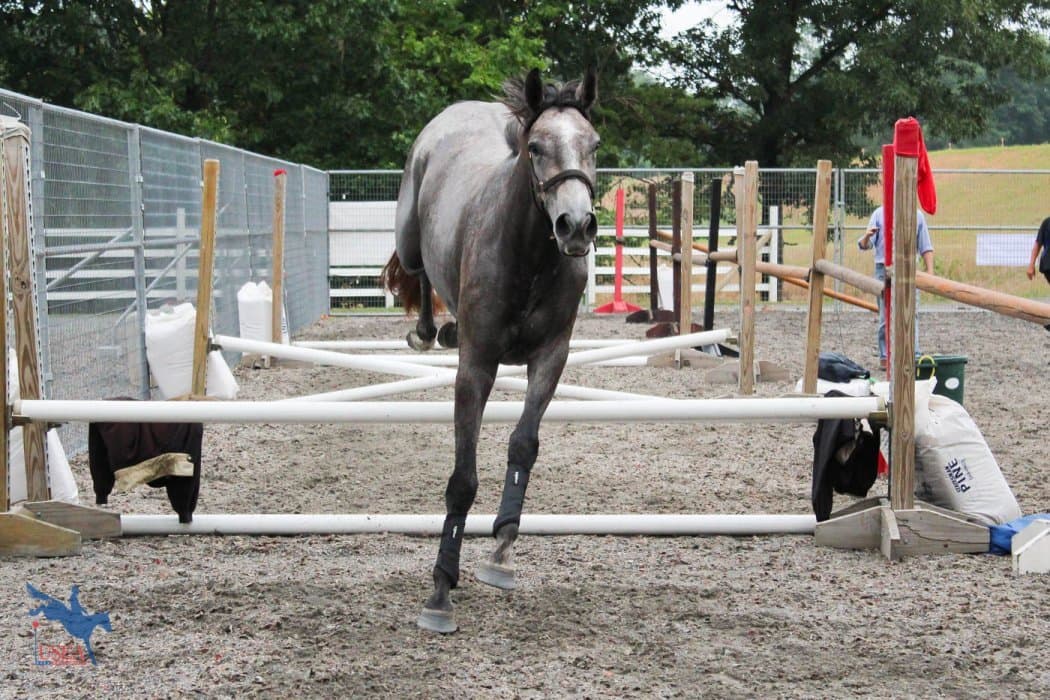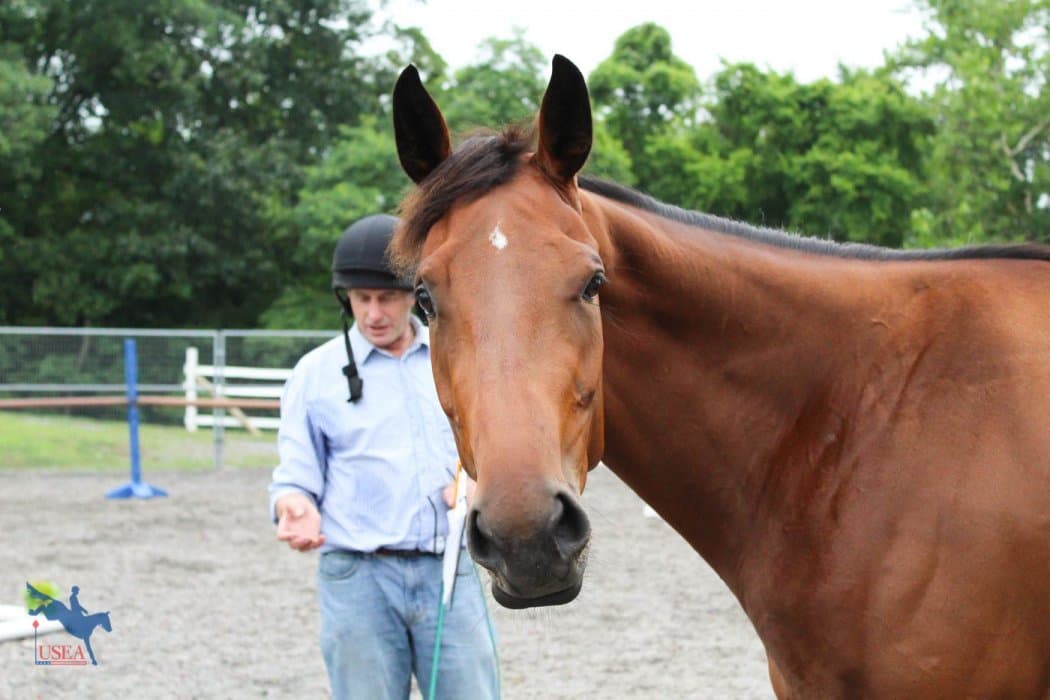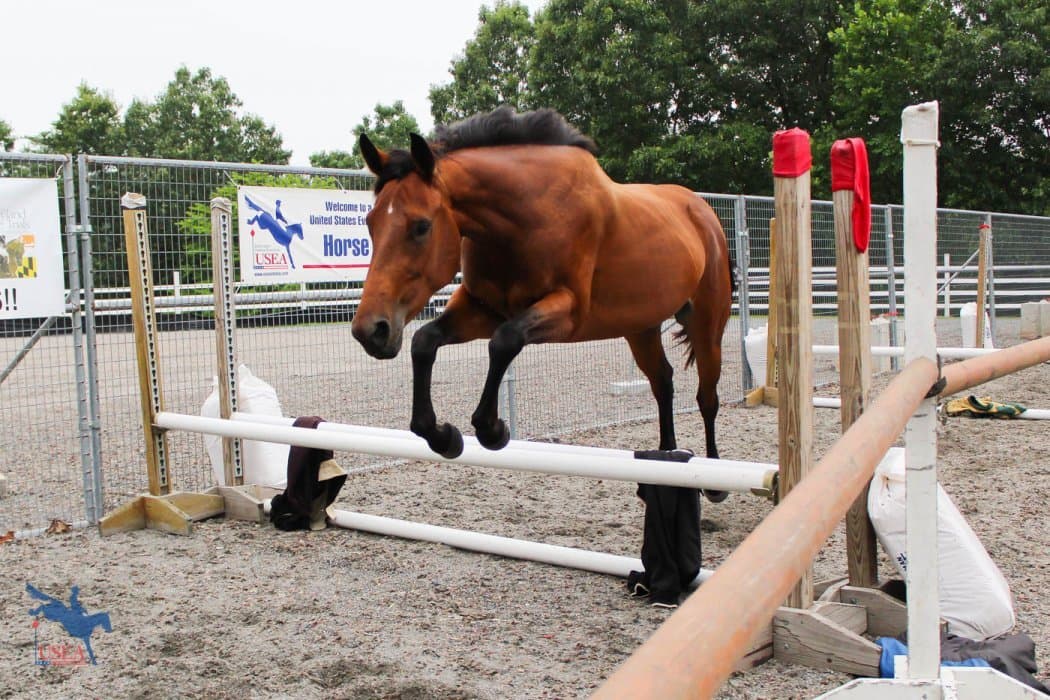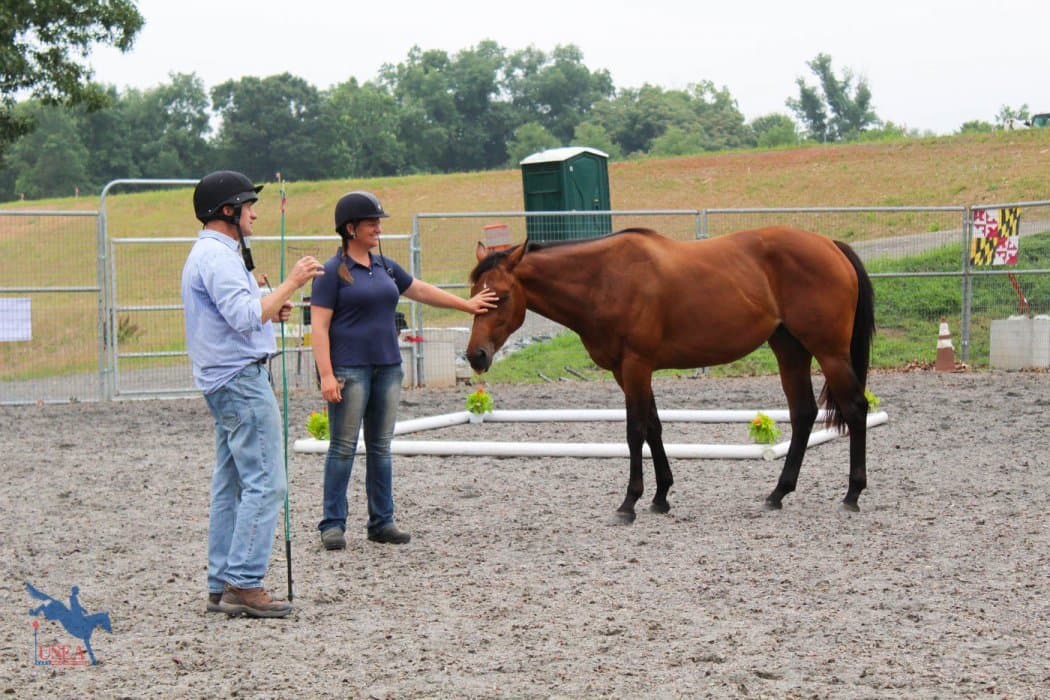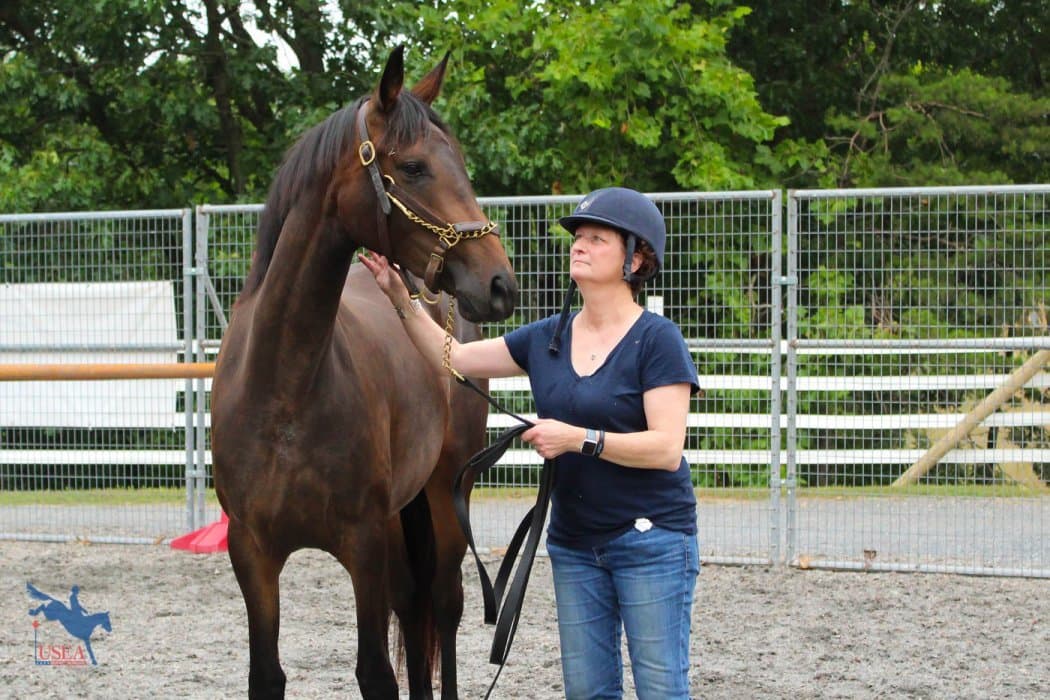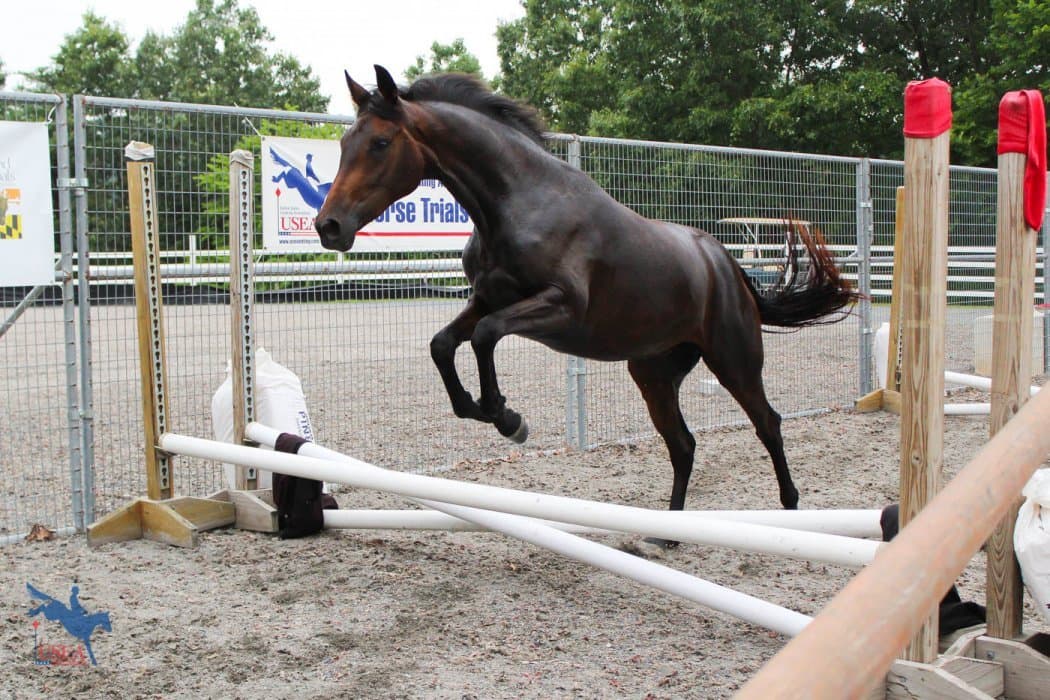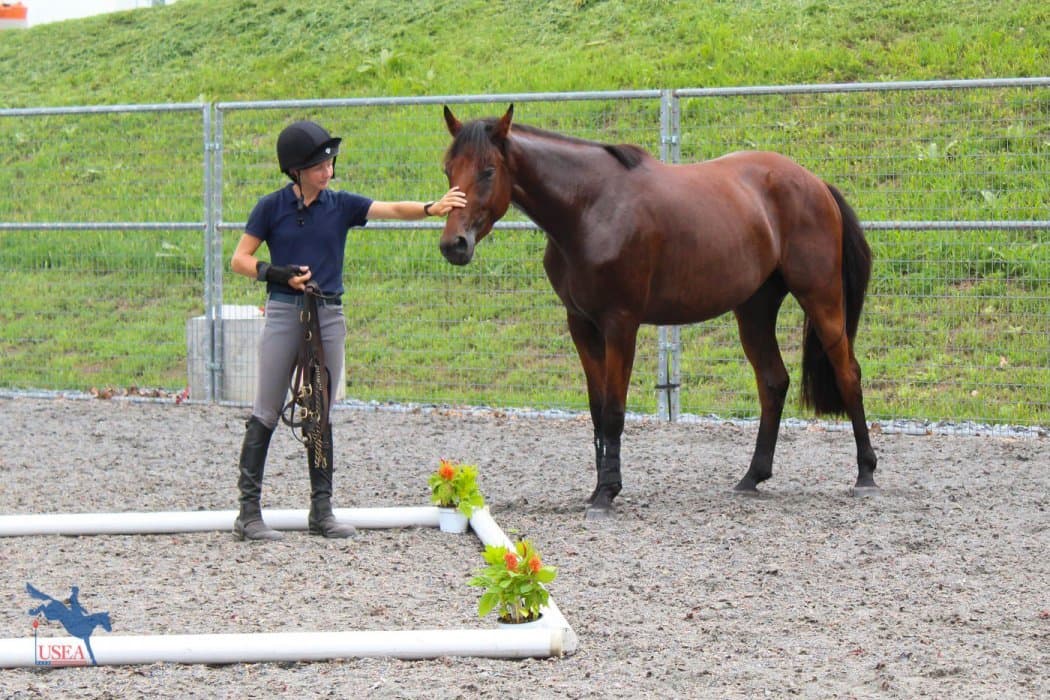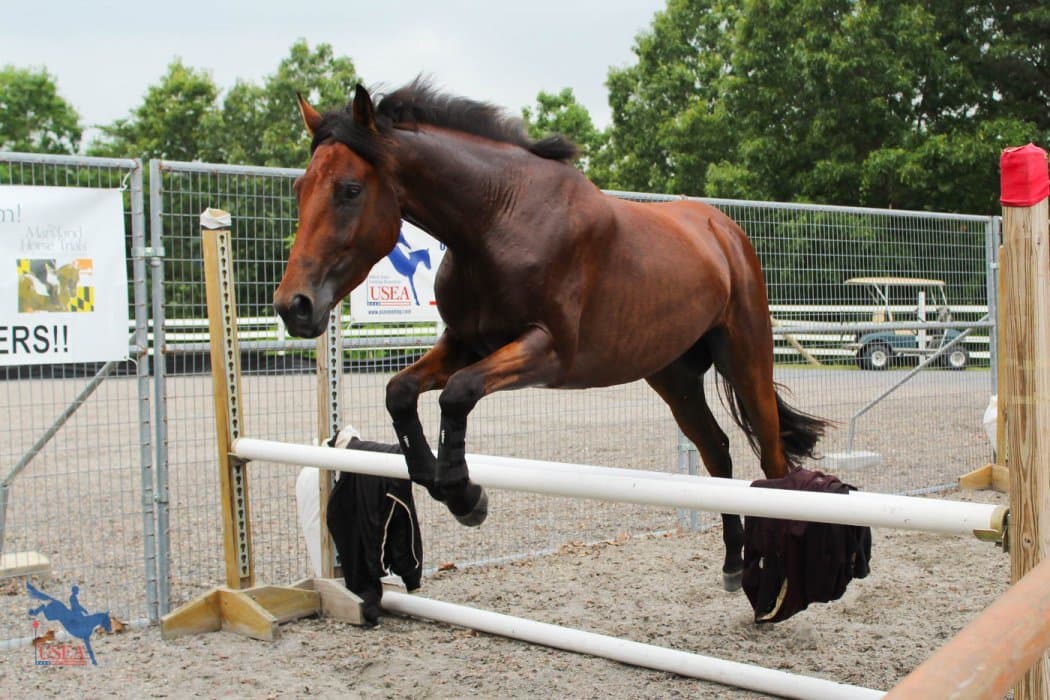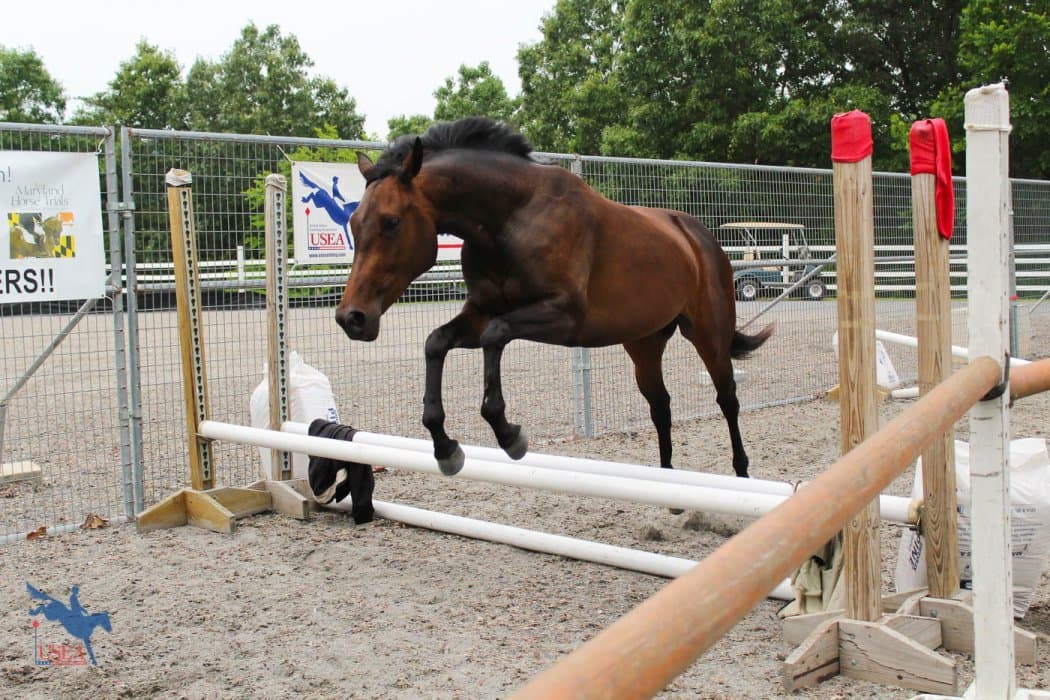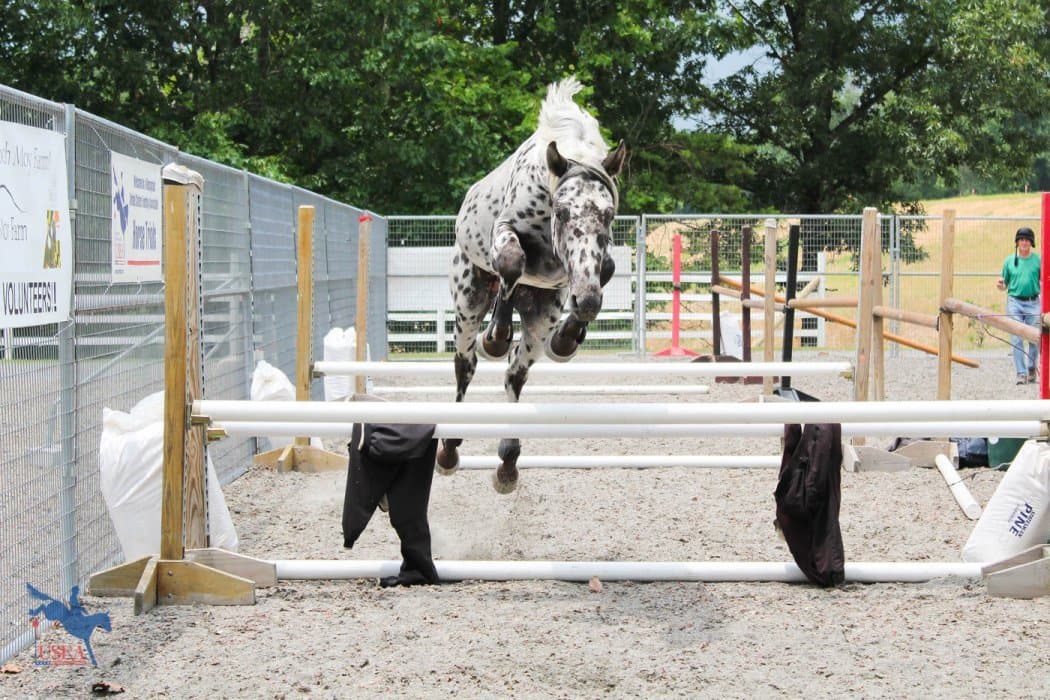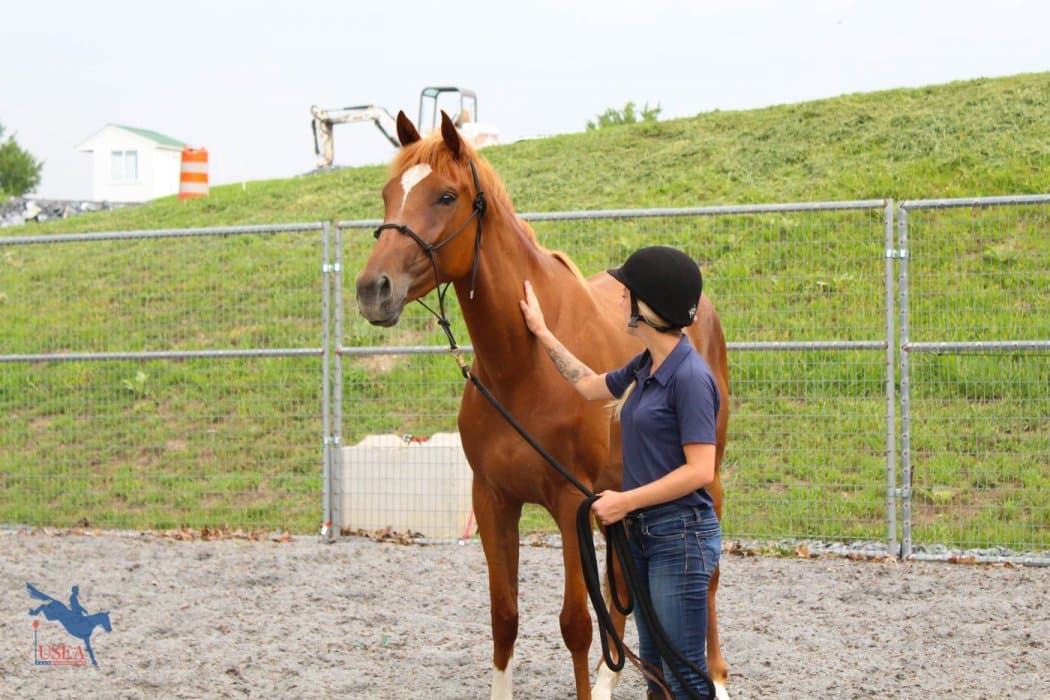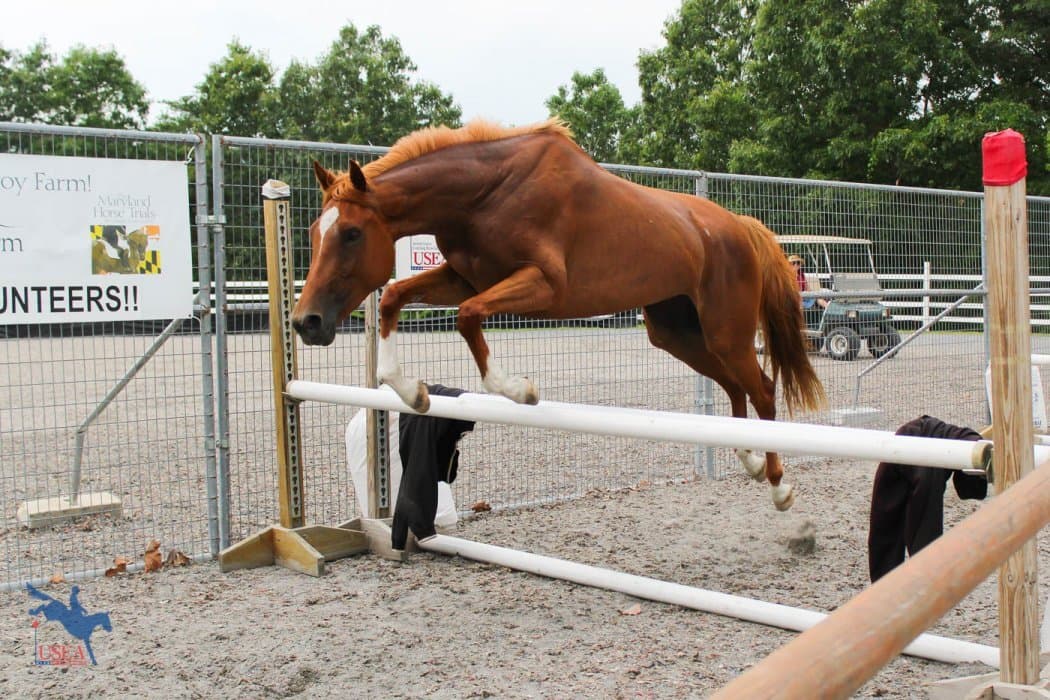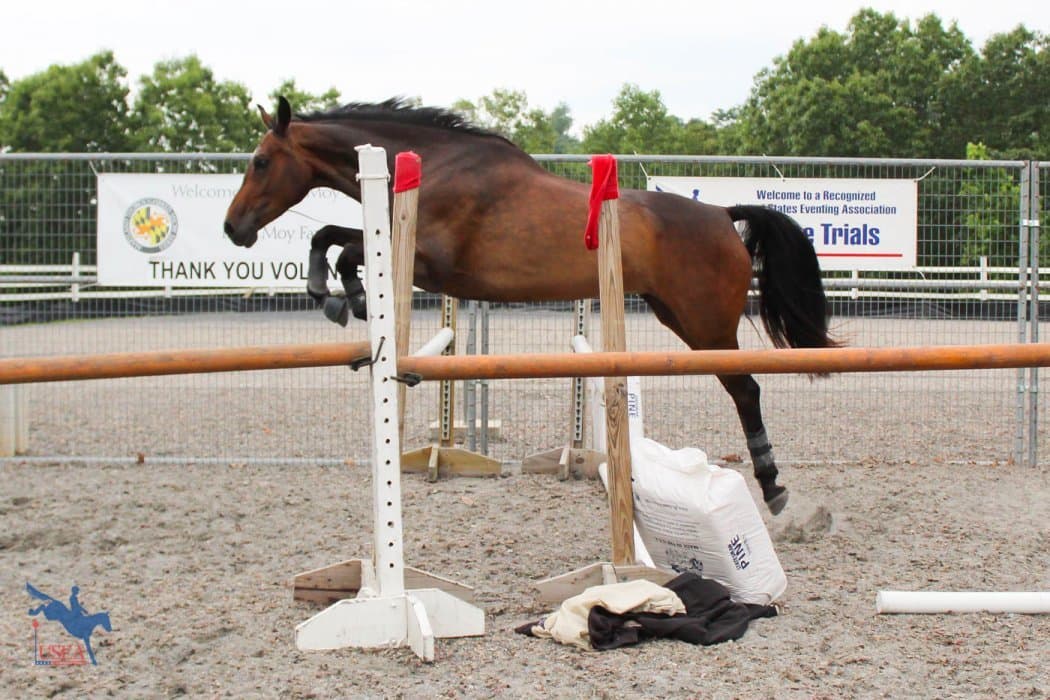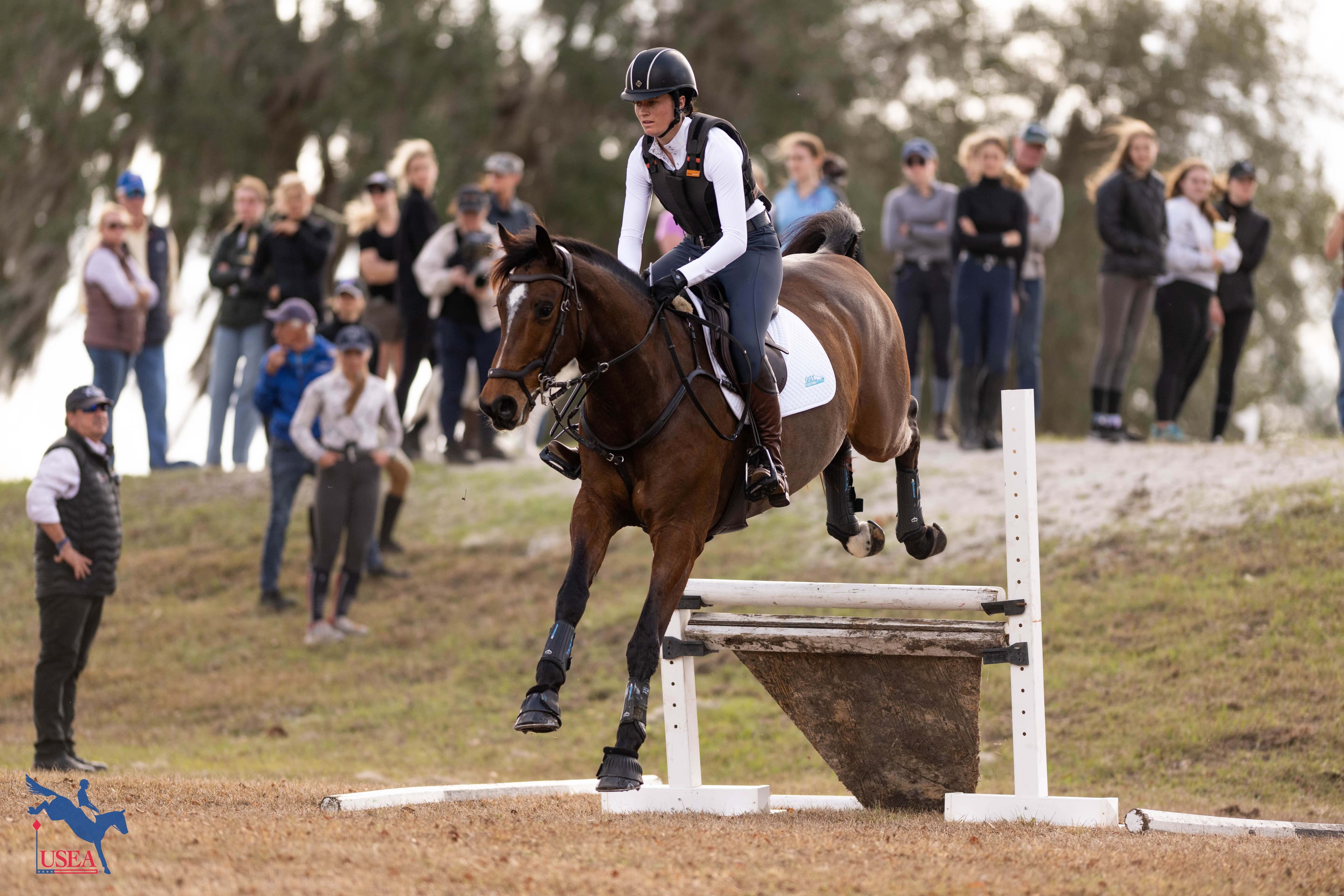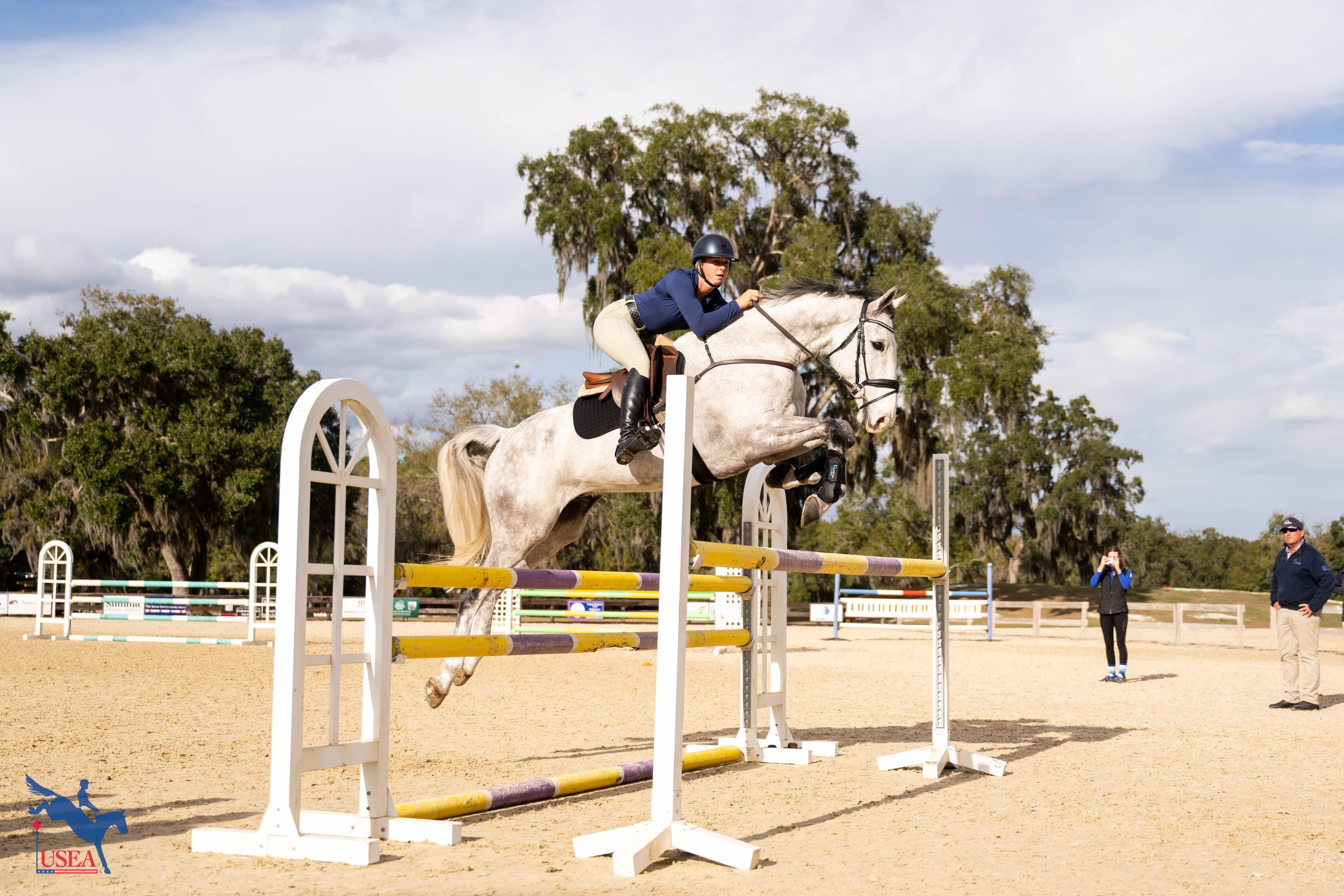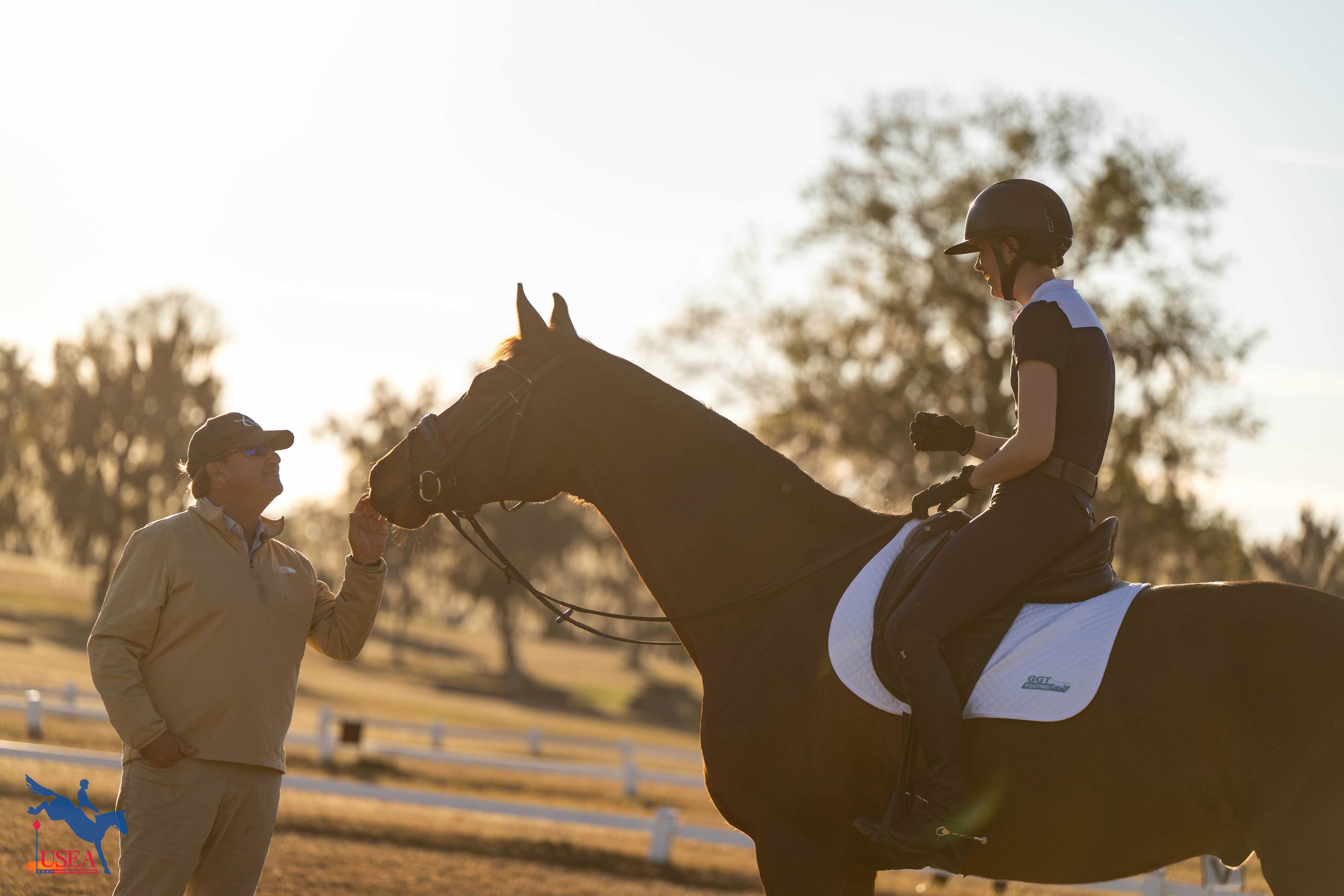Teaching the Horse to Use His Hind End at Loch Moy Farm’s USEA FEH Jump Chute Clinic with Chris Ryan
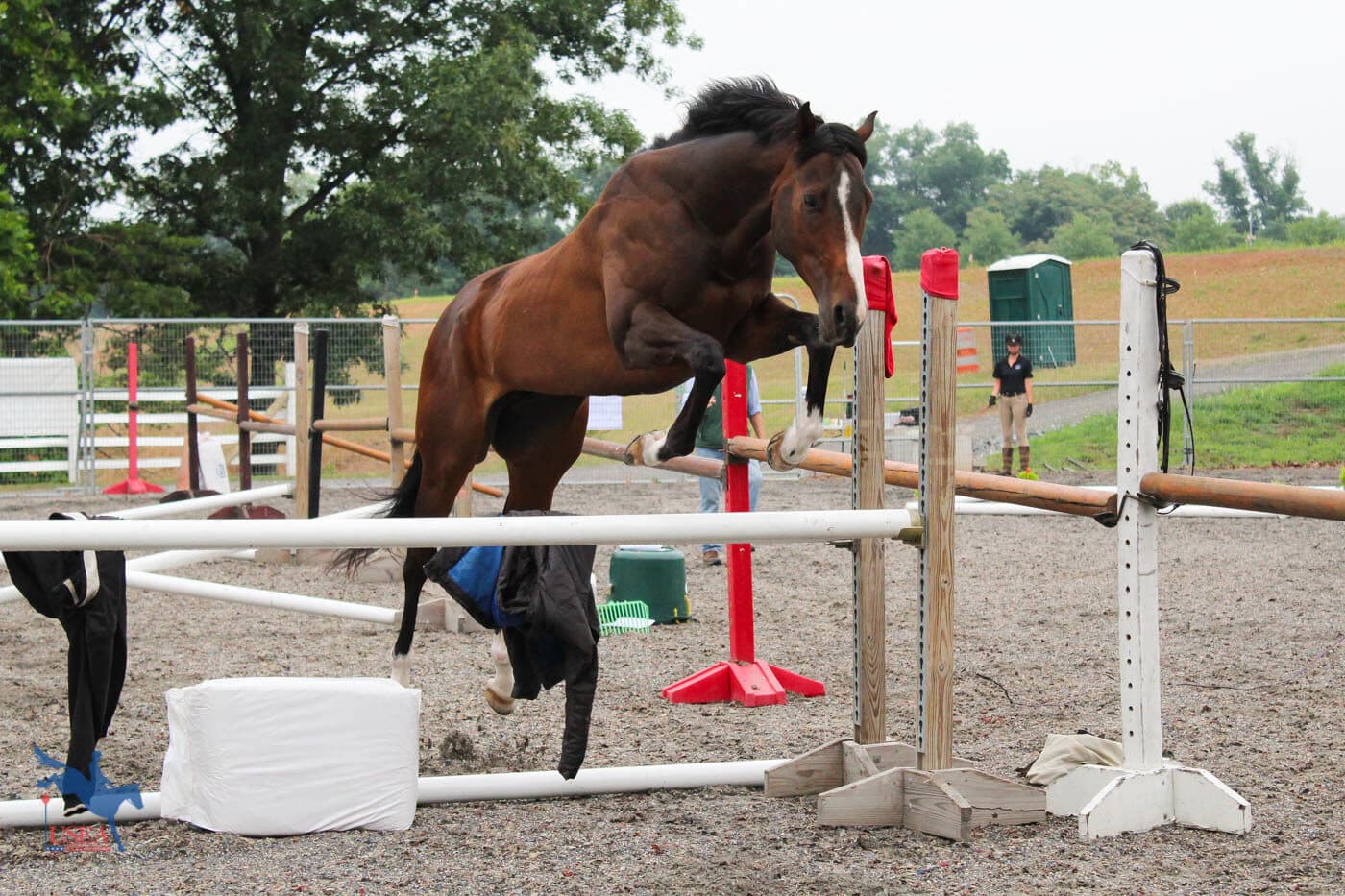
Nineteen young horses traveled to Carolyn Mackintosh’s beautiful Loch Moy Farm in Adamstown, Maryland, to participate in the USEA Future Event Horse (FEH) Jump Chute Clinic, taught by the legendary horseman Chris Ryan. This two-day clinic provided an excellent opportunity for young horses and their owners, breeders, trainers, and handlers to become familiar with free jumping in the jump chute and to work with Ryan, who will judge the East and West Coast FEH Championships this fall alongside Robin Walker. As was announced earlier this year, the FEH series has added a 4-year-old FEH division in order to provide more opportunities for 4-year-olds not yet ready to compete in a Young Event Horse (YEH) division. Both 3- and 4-year-olds will be required to demonstrate their abilities over fences in the jump chute as a part of the FEH Championships.
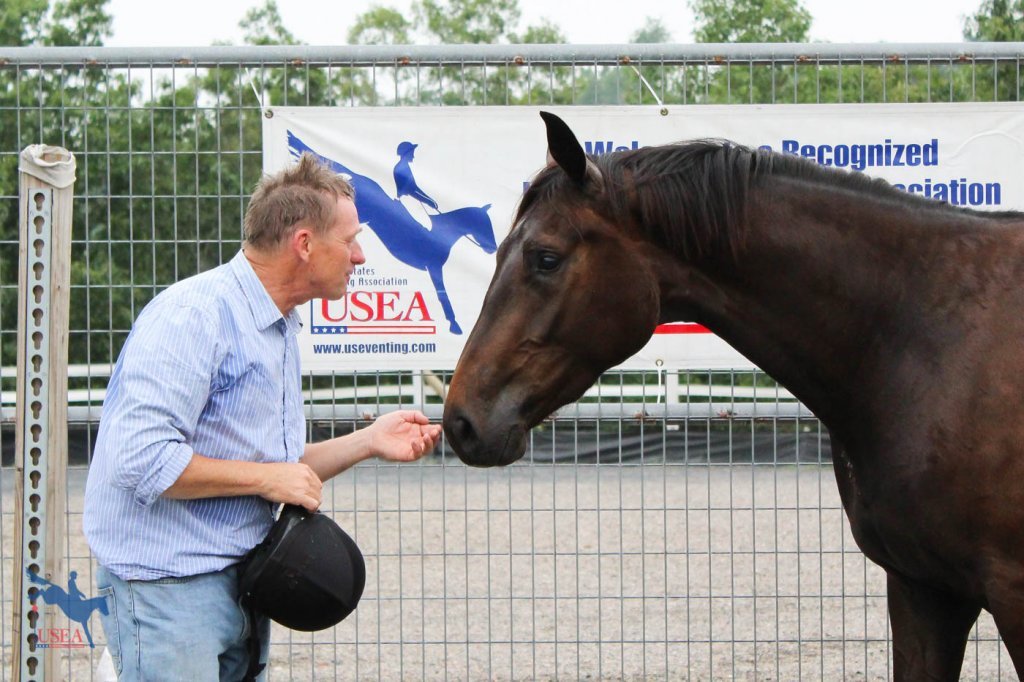
Chris Ryan says hello to Lisa Trevan's Helston WBF. USEA/Jessica Duffy Photo.
Ryan began each session by removing the horse’s halter or bridle and allowing the horse time to explore his surroundings unfettered by human interference. “A horse will only retain information he has learned when he is in an easy state of mind,” stated Ryan, emphasizing the importance of allowing the horse to be at ease with his environment in order to ensure understanding and retention.

The FEH Jump Chute Arena at Loch Moy Farm. USEA/Jessica Duffy Photo.
Once each horse seemed settled in the arena, Ryan and a team of volunteer whip handlers worked the horse in both directions at the trot and the canter on a figure-eight pattern, allowing the horse an opportunity to demonstrate his natural gaits and warm up his muscles before entering the jump chute for the first time. It also provided an opportunity for Ryan to assess "the quality of the canter and the horse's ability to hold a good rythm in that canter on each rein."

Phyllis Dawson's Windchase Lion Star exploring his surroundings. USEA/Jessica Duffy Photo.
Some horses in attendance at the clinic had never been through a jump chute before, and some had already experienced it several times. For those less experienced, all rails were kept on the ground for the first time through the chute. “The first thing you see him do when he’s [through the chute] is say, ‘Am I okay? Am I hurt? Am I alright?...Well, yes, I’m fine. Well then, what just happened back there?’” explained Ryan while allowing the horse a short break to process what he had just experienced. “They need time to analyze and understand what is happening.”
Once each horse had been through the chute a few times and was familiar and comfortable with the process, Ryan strategically placed a couple of jackets over the rails of the final fence. “It teaches the horse to back off the fence. I want him to back off. He’s going to see [the jackets] and go ‘Ooh!’ and he’s going to get in deep. He is automatically then lightening up the front end and putting more weight on the back end. He is also learning to respect the fence. He must get accustomed to this new balance.”

Julia Poladsky's Samwise TWF jumping up and around a fence hung with jackets. USEA/Jessica Duffy Photo.
Sure enough, the next time through the jump chute the horse saw the jackets hanging on the rails of the final fence and jumped with much more caution and attention, balancing and rocking back on his hind legs. “He put his hind end here, nearly jumping out of a stand-still,” said Ryan, pointing to a spot on the ground close to the placing rail. “That’s what I’m looking for. It’s getting them to find their hind end, that’s where the jump comes from.”
Once the horse had completed the exercise with the jackets draped across the rails of the final fence, Ryan added another jacket to the rails of the vertical preceding it. “As he turns in [to the jump chute], he takes a photograph of this here, and he puts it in his memory,” explained Ryan, indicating the vertical. “His whole attention is on that last fence. Why? Because of the two jackets there, they’re catching his eye. He’s completely forgotten about [the vertical]. Before I put the jacket there, there’s not enough there for him to even account [for the vertical]. So I put the jacket [on the vertical] just to back him off."

Annie Eldridge's SRF Western Territory jumping down the chute with jackets on the second and third fences. USEA/Jessica Duffy Photo.
Each horse clearly gained confidence each time through the chute, showing improvement in technique and balance each time. “It is important the chute holds only good experience for the horse,” Ryan emphasized. “You can so easily see the good results by the way the horse enters the chute quietly and in balance, even though he can anticipate what is coming up."
Finally, Ryan removed the jackets from all the jumps and allowed the horse through the jump chute again to observe the change in the horse’s form. “I take away the jacket and have them pop down the chute again and without exception every horse backed off his fence and made a really nice shape,” observed Ryan of all the horses in attendance.

Martha Mitchell's Haagen Af Midgard coming through the chute one last time without jackets. USEA/Jessica Duffy Photo.
Ryan encouraged each handler to review the scoring sheet for the free-jumping section of the competition. “The USEA has it spot on. It’s about attitude. It’s about the canter,” said Ryan, indicating on the 3-year-old score sheet where the canter accounts for 34% of the score. While attitude is not specifically mentioned on the score sheet, the directives under Free Jumping – Ability and Scope mention “willingness, carefulness, behavior before during and after the jump.”

Chris Ryan reviewing the FEH scoring sheet with Sara Welgoss. USEA/Jessica Duffy Photo.
After the clinic was over, Ryan said “I would hope that both the horse and their owner/producer can see where I am coming from in this clinic and that our responsibilities to the horse and theirs to us was clear. I think it can be quite difficult to replicate under saddle what we can achieve free schooling in the chute: a horse having to work out for himself the balance he requires at a fence.”
The USEA would like to extend a thank you to Carolyn Mackintosh and her team at Loch Moy Farm for hosting the clinic, the volunteers who acted as whip handlers, and all who attended the clinic as participants and spectators.
Robin Walker, the other FEH Championship judge, will be teaching a jump chute clinic at Pure Gold Stables in Salem, Ohio on August 29, and Loch Moy Farm will host another jump chute clinic on September 22, the day before the East Coast Championships, with Klaus Schengber as the clinician. The West Coast Championships will be held Thursday, September 21, 2017 at Twin Rivers Ranch in Paso Robles, California, and the East Coast Championships will be held Saturday-Sunday, September 23-24, 2017 at Loch Moy Farm.
About the USEA Future Event Horse Series
The USEA Future Event Horse (FEH) series was introduced in 2007 as a precursor to the already popular USEA Young Event Horse Series, which is designed for 4- and 5-year-olds. The FEH program evaluates the potential of yearlings, 2-year-olds, and 3-year-olds to become successful upper level event horses. FEH Classes are in-hand classes for yearlings, 2-year olds and 3-year olds. At Championships, 3-year-olds are required to compete in an additional free-jump division. New in 2017, the FEH program will offer a 4-year-old class in which the horses show their gaits under saddle at qualifier events, and compete in an additional free-jump division at Championships. To learn more, visit the FEH page of our website.
The USEA would like to thank the FEH series sponsors for their support: SmartPak, Standlee Hay, Professional’s Choice, and Merck Animal Health.
About the Future Event Horse Jump Chute Competition
3- and 4-year-old horses competing in the Future Event Horse Championships will compete in a free-jumping division in addition to the in-hand presentation for 3-year-olds and under-saddle for 4-year-olds.
A jump chute competition will feature a grid made of three obstacles. There will be a distance of 9’-12’ between a ground pole and the first obstacle (usually a cross rail), 18’-22.5” between the first and second obstacle (usually a vertical), and 19’-25’ between the second and the last obstacle (usually an oxer). In practice at home, owners and handlers are encouraged to learn which distances suit their young horse best. The maximum height of the first fence is 2’7”, the second is 2’9” and the last fence is 3’ in front, 3’6” in back and 4’ in width. Each horse will be allowed to jump through the chute 4-6 times, gradually building up to maximum height.
Introduction to Free Jumping Video
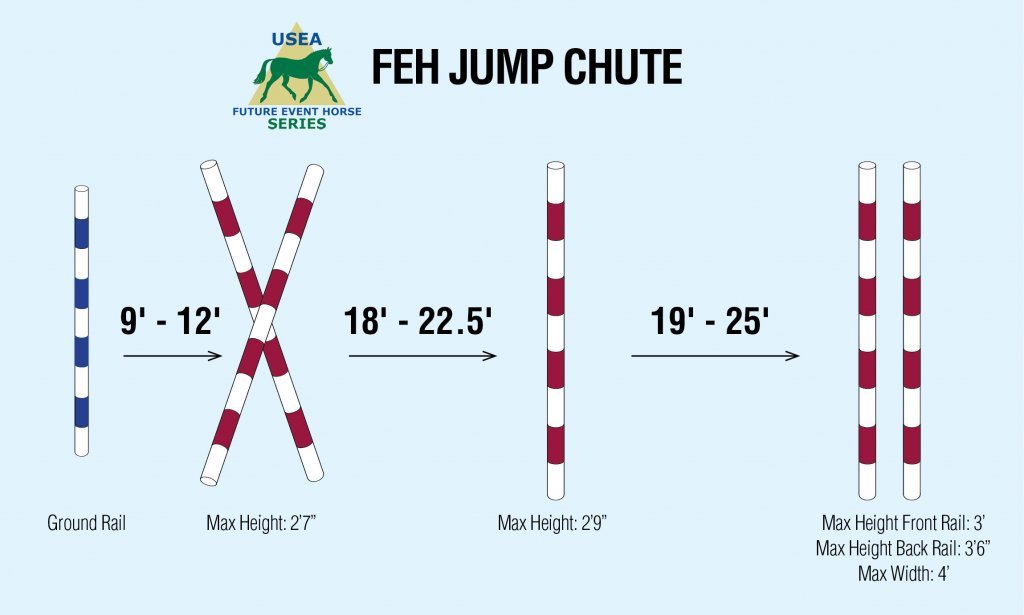
About Chris Ryan
Chris Ryan comes from one of the most storied families in Ireland. Following in his father’s footsteps, Chris hunted the legendary Scarteen hounds for 28 seasons. The Scarteen hounds have been in the Ryan family for more than 400 years. From racing in his youth, to huntsman, and now judge and commentator, Chris has become a regular part of eventing life in Ireland and Europe. One of the foundation selectors of the Goresbridge Go for Gold elite event horse sale held every November in Wexford, Chris has developed a keen eye for young stock, many having gone on to great things in Ireland, England, and Europe.
He is best known in the United States for finding McKinlaigh, the horse with whom Gina Miles’ won the individual silver medal at the 2008 Beijing Olympic Games, and producing him from a 3-year-old to a 5-year-old at his first Preliminary level event. International winning and placed horses including Copper Beach, Rourkes Drift, Cooley SRS, November Night, Prince Mayo, Glencento, Reenmore Duke, Ballymurphy Mark and many others all came under his eye and passed the test. Blending all this experience with an instinct for what is required and the genetics to operate at the highest level gives us an insight into what has kept Ireland at the top of the world eventing rankings for 21 of the 23 years they have been in existence.
About Loch Moy Farm
Nestled in the hills of Adamstown, Md., the Highlands at Loch Moy Farm provide the perfect setting and facility for horse shows and other exciting community and sporting events. With a beautiful setting, Monocacy River frontage, lovely views of Sugarloaf mountain, and easy access to nearby Buckeystown, this exciting venue is just 15 minutes from Frederick, 30 minutes from Leesburg, Va., and only 50 minutes from Washington, D.C. and Baltimore.
In addition to hosting the Maryland Horse Trials three times a year, Maryland International CIC* and CIC2*, and serving as the venue for the East Coast Future Event Horse Championships, Loch Moy Farm offers USDF recognized dressage and hunter/jumper shows, Twilight Eventing, across Derbys, Jackpot Jumpers, starter horse trials, eventing camps, clinics, year-round cross-country schooling on 8 acres of all-weather rings, and other exciting events! If you are interested in hosting your next event at Loch Moy Farm, please contact them directly: [email protected].
